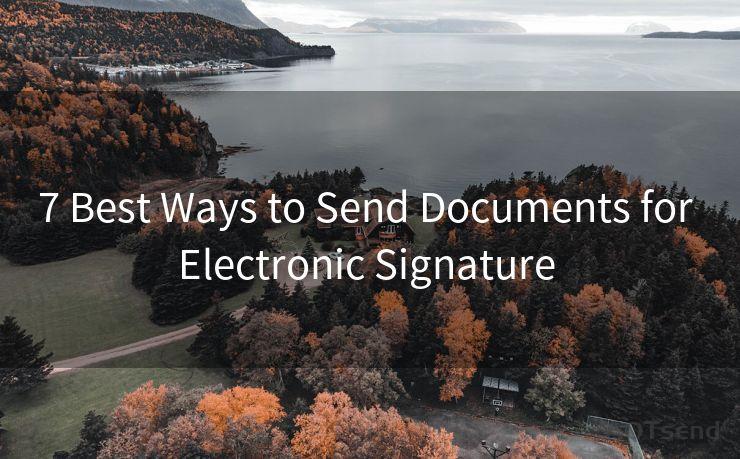7 Best Ways to Send Documents for Electronic Signature




In the digital age, the need for physical signatures has been greatly reduced, thanks to the advent of electronic signatures. Sending documents for electronic signatures has become commonplace in business transactions, making processes faster, more efficient, and environmentally friendly. Here are the seven best ways to send documents for electronic signature.
1. Utilize Dedicated E-Signature Platforms
Specialized e-signature platforms like DocuSign, Adobe Sign, or HelloSign offer secure and compliant ways to send documents for electronic signatures. These platforms provide a user-friendly interface, allowing you to upload documents, indicate where signatures are needed, and send them to recipients for signing.
2. Integrate with CRM or ERP Systems
If your business uses Customer Relationship Management (CRM) or Enterprise Resource Planning (ERP) systems, you can integrate e-signature functionality within these systems. This integration streamlines the process, enabling you to send documents directly from your CRM or ERP for electronic signatures.

3. Leverage Email with Encrypted Attachments
For a more traditional approach, you can send documents as encrypted attachments via email. This method ensures the security of the documents during transit. However, it may require additional steps for the recipient to decrypt and sign the document.
4. Use Secure File Sharing Services
Services like Dropbox or Google Drive allow you to share documents securely. You can upload the document, set the appropriate permissions, and share the link with the signer. Once the document is signed, it can be easily downloaded or synced back to your account.
5. Mobile Apps for On-the-Go Signing
Mobile apps designed for electronic signatures offer convenience and flexibility. These apps allow you to send documents for signing directly from your smartphone or tablet. This is ideal for situations where face-to-face meetings are not possible, and signatures need to be collected remotely.
🔔🔔🔔
【AOTsend Email API】:AOTsend is a Managed Email Service for sending transactional emails. Support Email Types: reminders, authentication, confirmations, notifications, verification codes, invoices, password resets, account activations, billing statements, two-factor authentication (2FA), and one-time passwords (OTP) emails, etc. $0.28 per 1000 Emails. 99% Delivery, 98% Inbox Rate.
You might be interested in:
Why did we start the AOTsend project, Brand Story?
What is a Managed Email API, How it Works?
Best 25+ Email Marketing Platforms (Authority,Keywords&Traffic Comparison)
Best 24+ Email Marketing Service (Price, Pros&Cons Comparison)
Email APIs vs SMTP: How they Works, Any Difference?
6. Web-Based Forms with Integrated E-Signatures
Creating web-based forms with integrated e-signature fields is another effective method. This approach is suitable for collecting signatures for standard agreements or consent forms. Users can fill out the form and sign it directly on your website or app.
7. API Integration for Custom Solutions
For businesses with unique requirements, integrating an electronic signature API into your custom software or application can provide a seamless user experience. This allows for complete customization and integration with your existing workflows.
In conclusion, there are multiple ways to send documents for electronic signatures, each with its own advantages. Choosing the right method depends on your specific business needs, the level of security required, and the convenience for both senders and signers. As the use of electronic signatures continues to grow, exploring these options can help your business operate more efficiently in the digital age.




Scan the QR code to access on your mobile device.
Copyright notice: This article is published by AotSend. Reproduction requires attribution.
Article Link:https://www.mailwot.com/p1076.html



